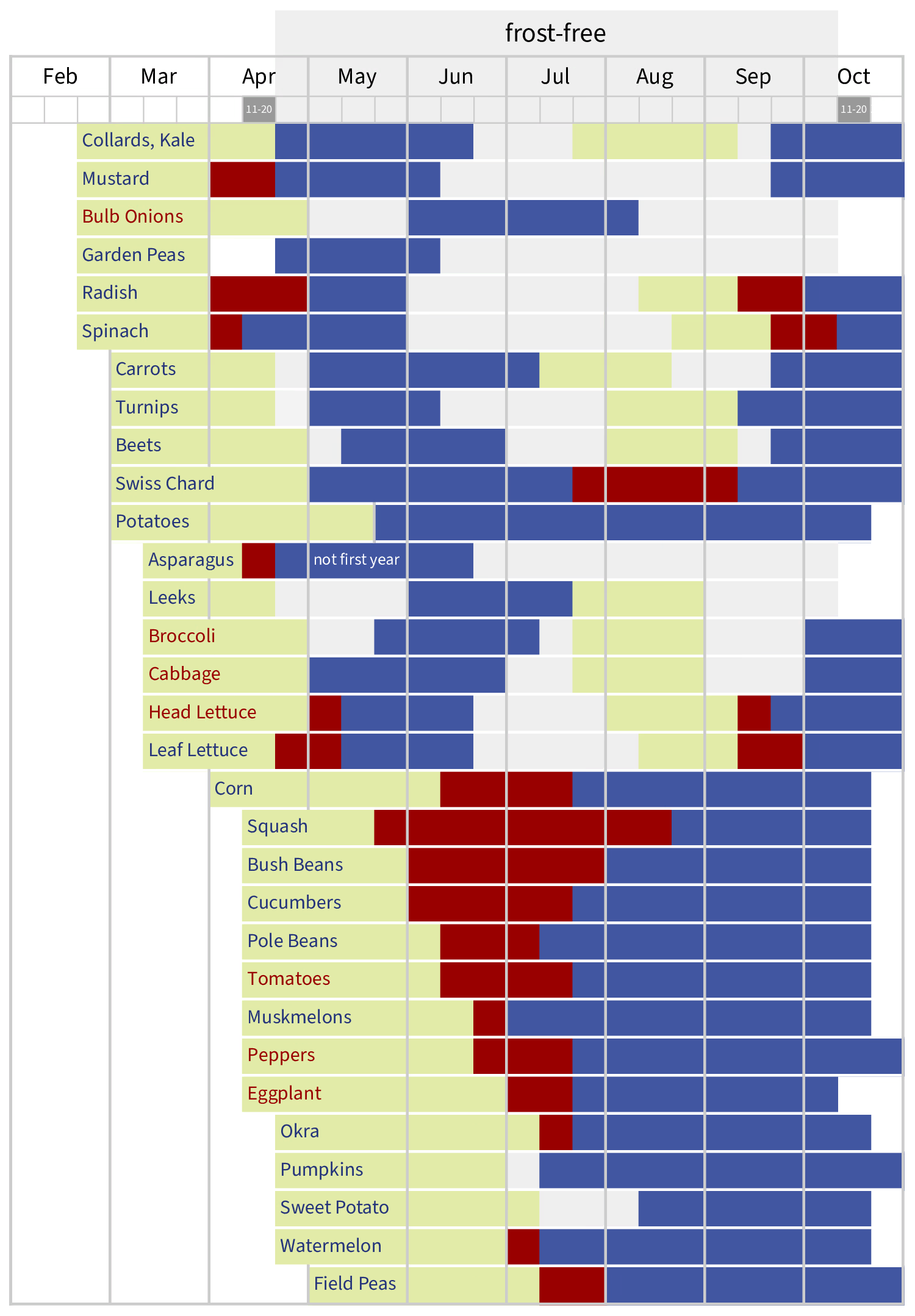1 minute read
Vegetables
Planning
Draw up a layout for your vegetable garden keeping the sun’s pattern in mind. If the ground is flat, run rows north-south. Regardless, place taller plants on the north end so that they don’t shade out shorter ones (lettuces and other leafy greens may appreciate some afternoon shade). See Vegetables / Prep for detailed instructions.
Consider potential soil contaminants in the area chosen for your garden, as well as for additions like compost and manure. Composted municipal yard waste often contains heavy metals and other contaminants and recently, herbicide carryover in compost, manure and some materials commonly used to mulch vegetable gardens has become a problem.
- Minimizing Risks of Soil Contaminants in Urban Gardens
- Herbicide Carryover in Hay, Manure, Compost, and Grass Clippings
- Certified Compost
Planting
You can direct-seed many cool-season vegetables. See Chatham’s Growing Small Farms list of recommended vegetable varieties.
Vegetable Calendar
The chart below uses 10-day intervals based on our Orange County frost dates. We use conservative frost date ranges of April 11–20 and October 11–20, meaning that there is only a ten percent chance of a later spring frost or earlier fall frost. Planting in the middle of a vegetable’s date range is the most reliable choice.

